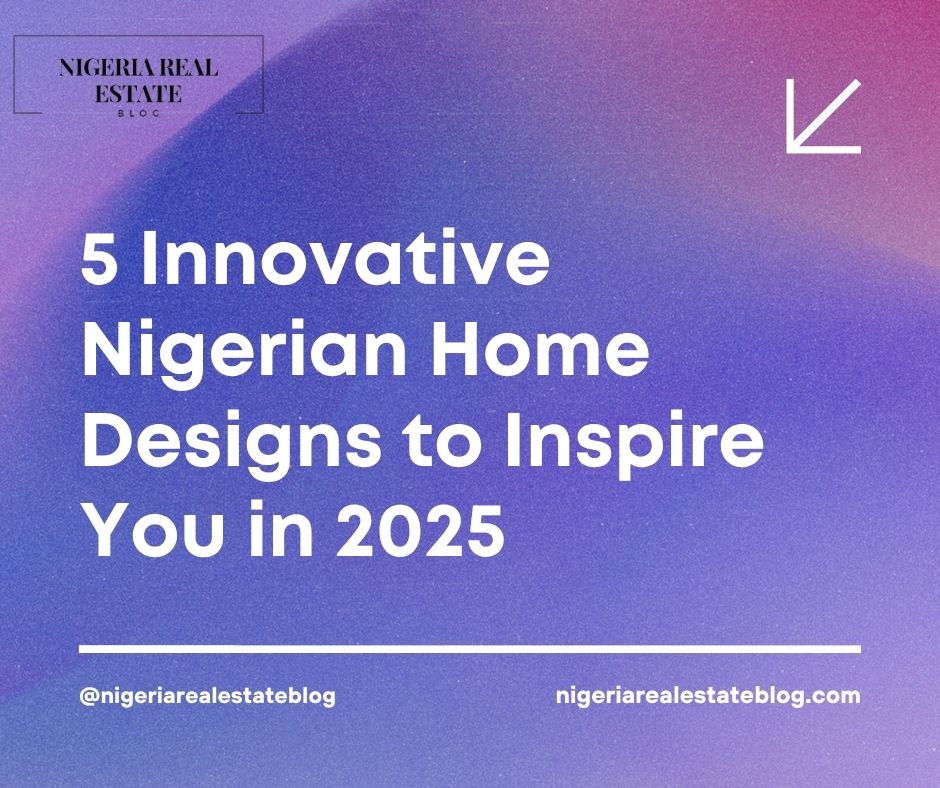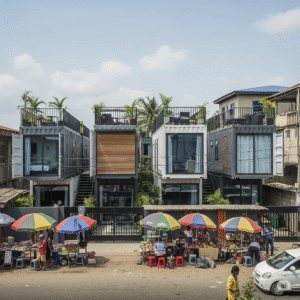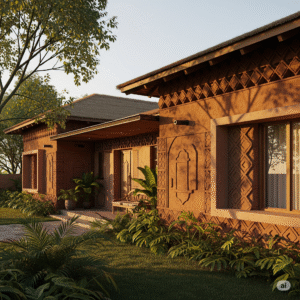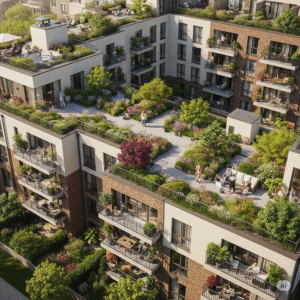
5 Innovative Nigerian Home Designs to Inspire You in 2025
Nigeria’s architectural landscape is evolving, with a 20% surge in demand for sustainable and innovative home designs (source: BusinessDay, 2025). From Lagos to Abuja, architects are blending cultural roots with modern tech to create homes that are affordable, eco-friendly, and stylish. Whether you’re building in Epe or renovating in Ikoyi, 2025 is the year to think bold.
This Architecture guide highlights 5 innovative Nigerian home designs to inspire you in 2025, complete with costs, examples, and local architects. Perfect for homeowners, investors, and design enthusiasts, these ideas will spark your next project.
Table of Contents
- Container Homes: Affordable & Modern
- Solar-Integrated Bungalows
- Mud-Brick Revival Designs
- Modular Prefab Homes
- Rooftop Garden Apartments
- How to Bring These Designs to Life
1. Container Homes: Affordable & Modern

Cost: ₦8M–₦15M (2–3 bedrooms)
Why It Works: Recycled shipping containers offer durable, stylish homes, cutting construction time by 40%.
Example: Temi, a Lagos entrepreneur, built a ₦10M container home in Ibeju-Lekki, designed by EcoBuild Nigeria.
Architect: EcoBuild Nigeria (ecobuild.ng, ₦500,000 design fee).
Tip: Add insulation (₦200,000) for Lagos’s heat.
2. Solar-Integrated Bungalows

Cost: ₦12M–₦20M (3 bedrooms)
Why It Works: Solar panels reduce electricity bills by 80%, ideal for Nigeria’s 200 sunny days/year.
Example: Kemi, an Abuja homeowner, spent ₦15M on a solar bungalow by Sunray Ventures, saving ₦300,000/year.
Architect: Sunray Ventures (sunray.ng, ₦700,000 design fee).
Tip: Use Arnergy solar systems (₦1.5M) for reliability.
3. Mud-Brick Revival Designs

Cost: ₦6M–₦12M (2–3 bedrooms)
Why It Works: Hausa-inspired mud-brick homes are 30% cheaper and naturally cool, reducing AC costs by 50%.
Example: Chidi, a Kano investor, built a ₦8M mud-brick home with MOE+ Architects, selling it for ₦12M.
Architect: MOE+ Architects (moeplus.com, ₦400,000 design fee).
Tip: Source bricks locally (₦50,000/truckload).
4. Modular Prefab Homes

Cost: ₦10M–₦18M (2–4 bedrooms)
Why It Works: Factory-built modules speed construction by 50%, perfect for fast-growing suburbs like Epe.
Example: Aisha, a Lekki resident, erected a ₦12M prefab home in 2 months via ModuHaus Nigeria.
Architect: ModuHaus Nigeria (moduhaus.ng, ₦600,000 design fee).
Tip: Customize layouts online for free on ModuHaus’s platform.
5. Rooftop Garden Apartments

Cost: ₦15M–₦25M (2–3 bedrooms)
Why It Works: Green roofs cut heat by 20% and support urban farming, boosting rental appeal by 15%.
Example: Emeka, a VI landlord, added a ₦2M rooftop garden to his ₦18M apartment, renting it 25% faster.
Architect: GreenSpace Designs (greenspace.ng, ₦800,000 design fee).
Tip: Use low-maintenance plants like aloe (₦5,000/pot).
6. How to Bring These Designs to Life
- Hire Local Architects: Contact NIA-registered firms (nia.ng, ₦400,000–₦800,000 fees).
- Budget Smart: Allocate ₦6M–₦25M based on design.
- Use Proptech: Visualize designs via PropertyPro.ng’s 3D tours (free).
- Source Locally: Buy materials at Balogun Market (₦50,000–₦500,000).
Build Your Dream Home in 2025
These innovative designs are reshaping Nigeria’s homes, blending sustainability and style. This Architecture guide inspires homeowners and investors to build smarter in 2025. Share it to spark Nigeria’s design revolution!
Share This Post: Post on LinkedIn, X, WhatsApp, or Instagram to spread the architectural vibe! 🏛️
Subscribe to Nigeria Real Estate Blog for more architecture insights, decor tips, and housing news!


